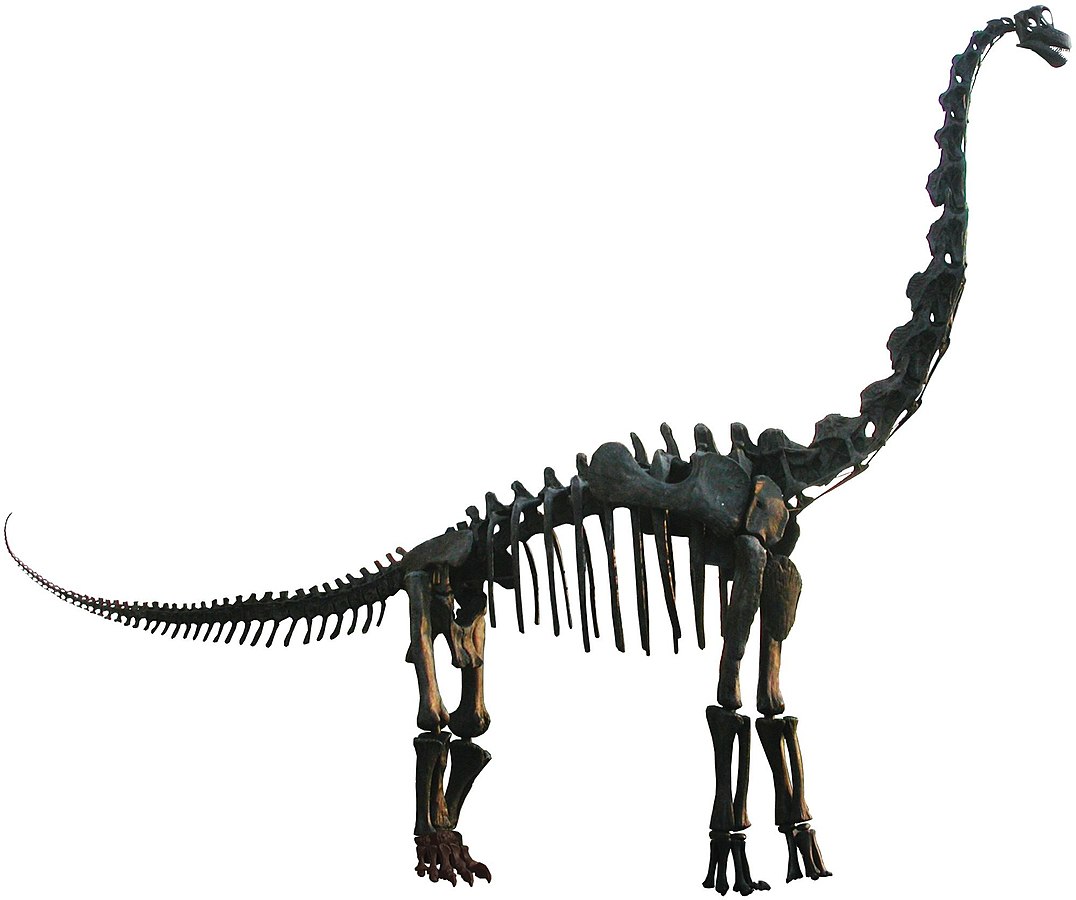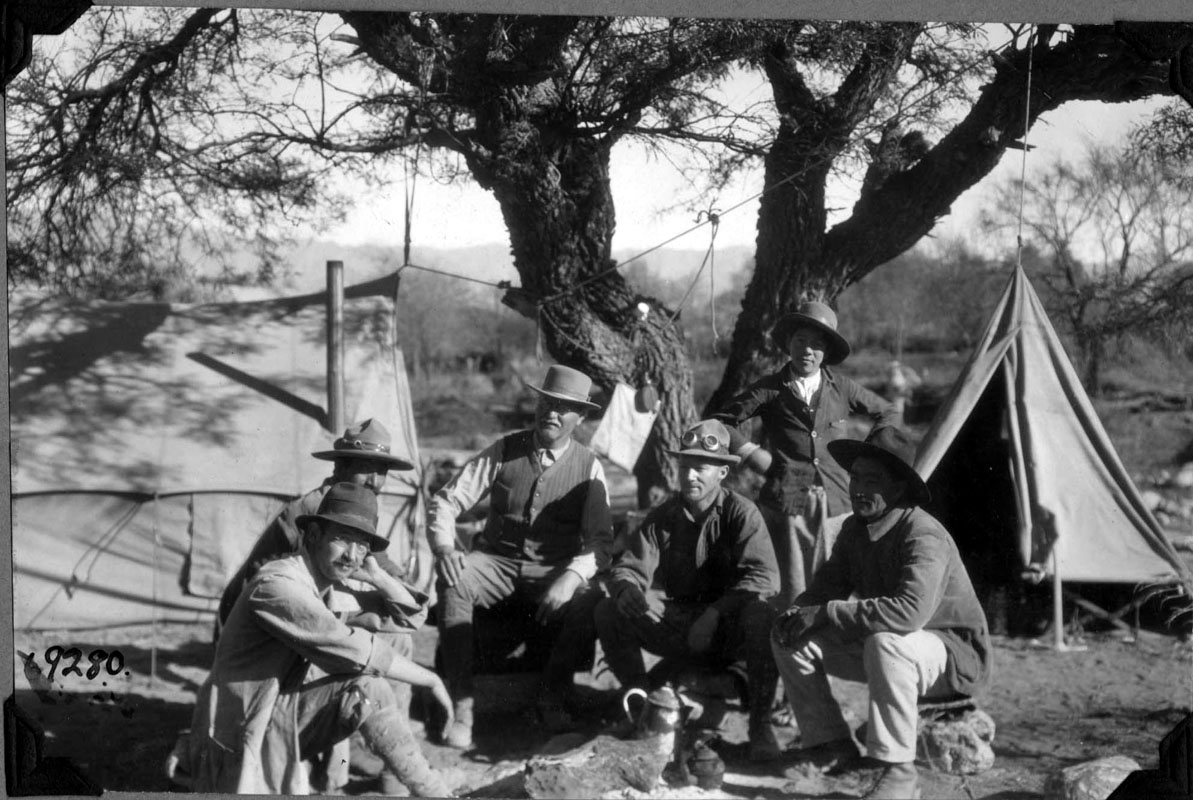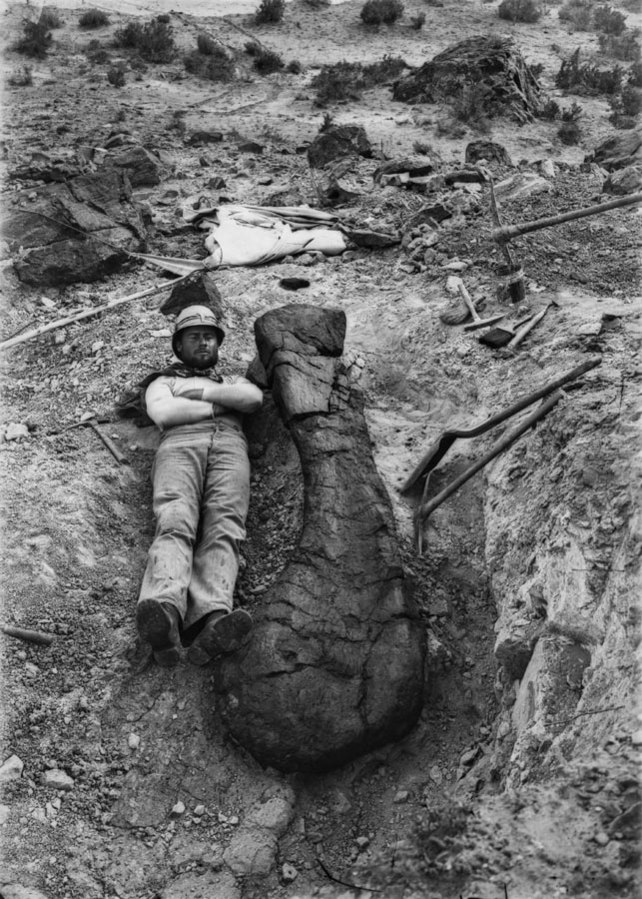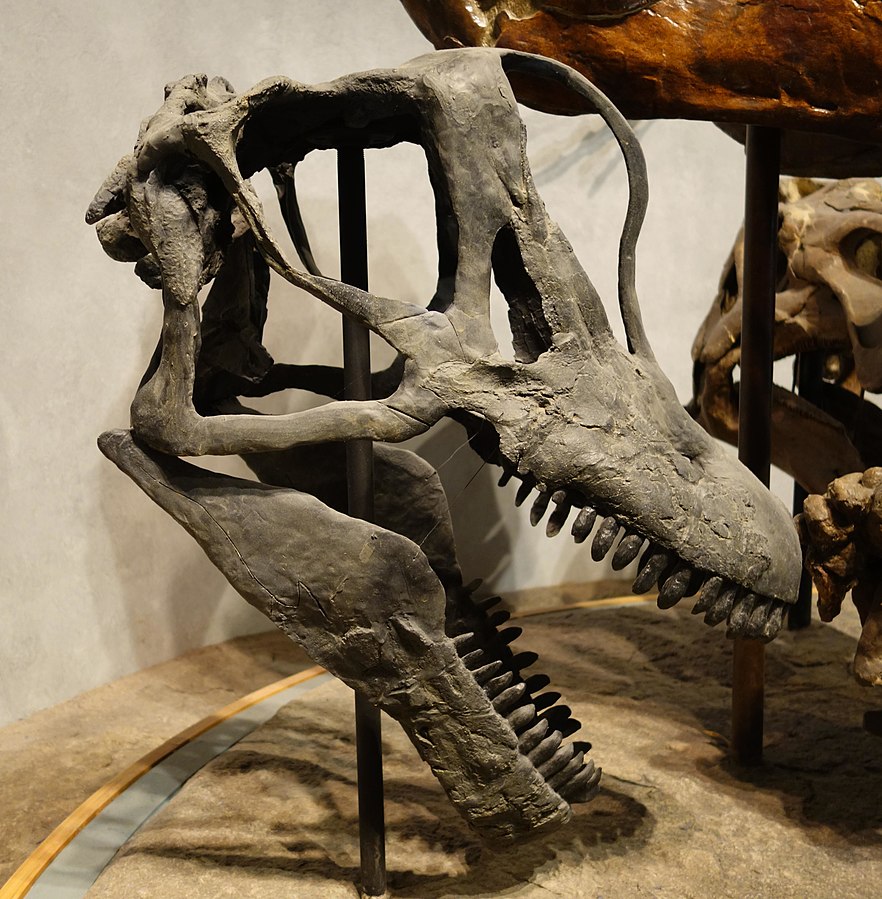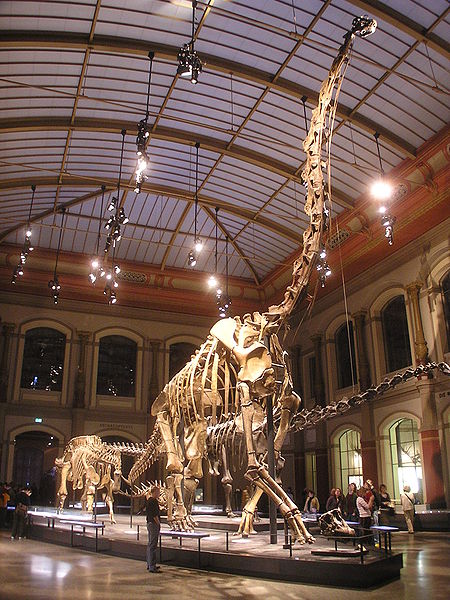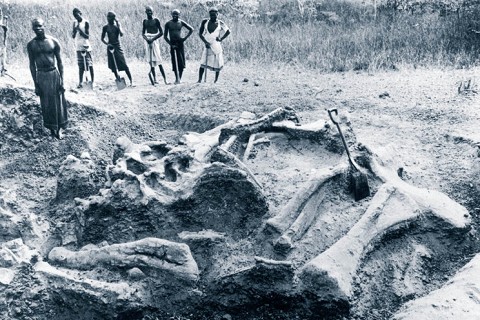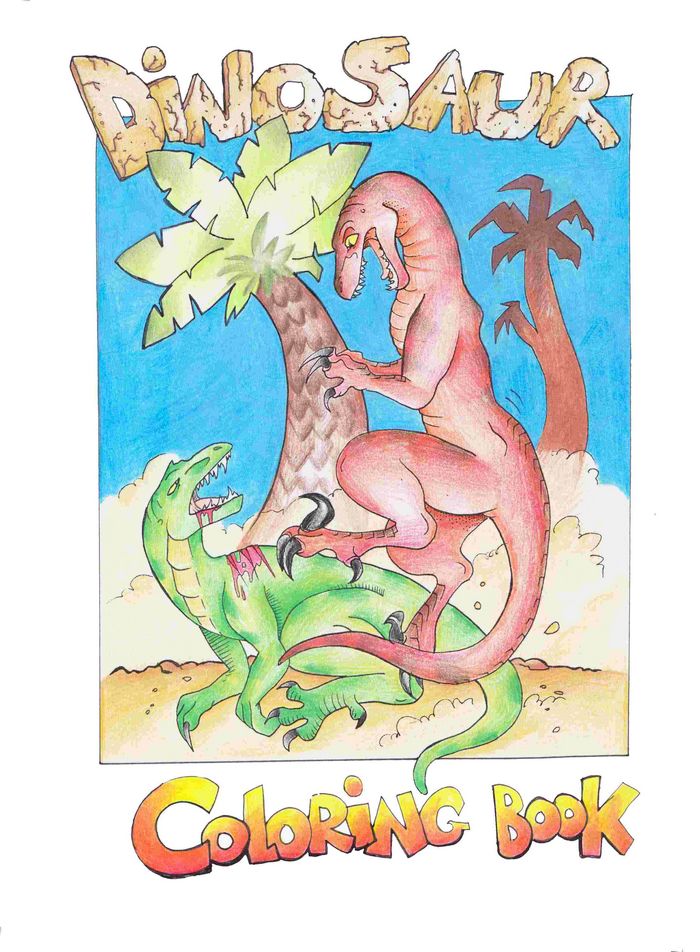If I was the leader of a band, I would call it Brachiosaurus and the Sauropods. I would avoid silly jokes about the Hard Rock Café, but we could rock on down to the dawn of the Palaeogene, whilst the lights go out elsewhere.
So this is about Brachiosaurus, and as the title suggests, brachiosaurus was a sauropod dinosaur. Sauropods are those large, four legged dinosaurs that had long necks, long tails and which grew to enormous sizes. In fact, the largest land animals that ever lived were sauropods. But that is material for another blog – today we want to focus on one particular species, namely Brachiosaurus altithorax.
Sandwiched between the Triassic and the Cretaceous
Brachiosaurus is a genus of sauropod dinosaur that lived in North America during the late Jurassic. If you aren’t aware, the Jurassic is one of the great geological time periods, sandwiched between the Triassic and the Cretaceous. All three make up what is known as the Mesozoic, which lasted from 252 million years to 66 million years ago. The Jurassic itself stretched from the 201 million years to 145 million years ago.
The first bones of a Brachiosaur were found by Elmer Riggs back in 1903. At the time he was working for the Field Museum in Chicago, although the brachiosaur fossils were discovered in the Colorado River valley in western Colorado. The place was known as Rigg’s Quarry, or Rigg’s Hill, and you can go and visit the place if you so desire.
A veritable treasure trove of dinosaur fossils
Being a palaeontologist, he also took on the job of describing and naming his latest find. The bones came from the Morrison Formation, that veritable treasure trove of dinosaur fossils. The image below shows the lateral extent of the Morrison Formation, and as you can see it covers a huge swathe of North American real estate, extending over much of central US and the southern portions of Canada.
38 crates worth weighing a total of 5.7 tonnes
The bones were discovered on the 4th of July 1903, or so they say, and they dug them up at a rapid rate; by the 17th August of that same year the last bone was jacketed in plaster. The next job was to get them all home to Chicago – all 38 crates worth weighing a total of 5.7 tonnes. The railroad companies allowed Riggs, his team,and his bones to travel free of charge back home as a public relations exercise. What wonderful people they were.
Came up with a name for his dinosaur
After lugging those bones back to the Field Museum, Riggs then had the job of cleaning them up, removing all the excess rock, and then describing them. And of coming up with a name for his dinosaur. He noted that the upper forelimb bone – (the humerus) – and thigh bone (femur) were somewhat longer than the hind limb, which resulted in an inclined trunk (body), with the shoulders being much higher than the hips. He called his new creature Brachiosaurus, which means ‘arm lizard’ and altithorax referring to its deep chest. The neck exited the trunk at a steep angle – the build resembling that of a giraffe. The forelimbs of Brachiosaurus appear to have been slightly sprawled at the shoulder joints, and hat’s off to Schleich for incorporating these features into their model of this wonderful creature.
Large air sacs reduced the overall density
Sticking with the discussion around the morphology of Brachiosaurs, it had four legs, a small skull in relation to its body size, a long neck, short muscular tail and slender columnar limbs. Large air sacs, connected to the lung system, were located in the neck and body, which reduced the overall density of the animal. The neck was long even by sauropod standards, based on evidence from the closely-related Giraffatitan. It had an immensely deep ribcage compared to other sauropods.
The largest sauropod skull
The skull has been estimated by some palaeontologists to be 81 cm long, which makes it the largest sauropod skull of the Morrison Formation. And there were plenty of other species of sauropods during Morrison Formation times, so the competition was stiff. However other workers have estimated the head to be slightly shorter at 70 cm. It had 14 to 15 teeth either side of its jaw, used for chopping up vast quantities of vegetation – but more on that later.
Its heart weighed in at 400 kg
To solve the problem of pumping blood up to its brain, it had to pump double the amount of blood of that of a giraffe – and it has been estimated that its heart weighed in at 400 kg. That’s half the weight of a small car.
It was a high browser, plucking and cutting vegetation off branches as much as 9 m above the ground. It ate ginkgos, conifers, tree ferns and large cycads. Up to 400 kg per day, which is a lot of biomass to process.
It was initially thought to be cold blooded, but thinking has come around the warm-blooded theory, although there are those who say that if it was warm blooded, due to its size it would overheat. So, the jury is still out on that one.
Its body lay in ancient muds
Brachiosaurus is only known from the Morrison Formation of western North America. Its bones have been recovered from rocks that have been interpreted as having been laid down in a semi-arid environment characterised by flat flood plains and distinct wet and dry seasons. Flooding of the plains would have taken place during the wet periods. The discovery of brachiosaurus confirms this, with much of its body lying in ancient muds, now preserved as shales – whilst the neck lay in sands which were deposited by fast-flowing rivers with higher energy levels.
The missing bones were moulded and cast to make a ‘complete’ dinosaur
Only about 20 percent of the bones of Brachiosaurus were excavated, the rest were lost, probably due to those fast flowing rivers, scavengers and weathering. Due to the lack of bones, a full skeleton was never put on display – the bones that were recovered were put in glass showcases within the museum for visitor to marvel at. However in 1993 the missing bones were moulded and cast to make a ‘complete’ dinosaur, based on material from its close relative, Giraffatitan.
Giraffatitan comes from a world away
Now Giraffatitan comes from a world away – its bones were collected from the Tendaguru Formation in southern Tanzania by a German expedition back in the early part of the 20th Century. Giraffatitan was initially given the name Brachiosaurus brancai, that’s how closely related these two dinosaur species were.
The ‘complete’ brachiosaur was put on display at the north end of the Stanley Field Hall in the Field Museum where it stood until 1999, to be replaced, possibly upstaged, by Sue, the Tyrannosaurus rex. For more on Sue, check out our blog on T Rexes . The brachiosaurus now stands in B Concourse, Terminal 1, O’Hare International Airport in Chicago.
Fossils of brachiosaurs are rare but fragmentary bones have been recovered from Colorado, Utah and Wyoming.
If you want one of these brachiosaurs...
If you want one of these brachiosaurs, head on over to the DinoZone store and grab one for your collection.
Other sauropods from the Morrison Formation are Apatosaurus, Diplodocus, Barosaurus, Supersaurus, Camarasaurus and Haplocanthosaurus. Predators were Ornitholestes, Ceratosaurus, Allosaurus and Torvosaurus.
We shall write another post on the fauna and flora of the Morrison Formation at a later stage so watch this space.
Please leave your comments below, telling us what you like about this blog, the DinoZone in general, and of course what else you would love to see here at the DinoZone.
And seeing that you are here, grab yourself a copy of our free colouring book, which is full of wonderful dinosaurs and other Mesozoic creatures for you to bring back to life.

